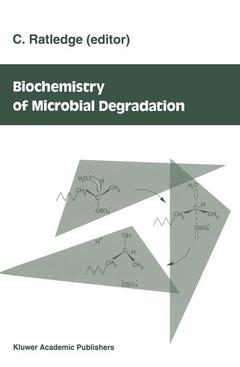Acidic Precipitation, Softcover reprint of the original 1st ed. 1990 Soils, Aquatic Processes, and Lake Acidification Acidic Precipitation Series
Langue : Anglais
Coordonnateurs : Norton Stephen A., Lindberg S.E., Page A.L.

various places of the world. Thus, it is hoped that this up-to-date subseries would increase the "awareness" of the world's citizens and encourage governments to devote more attention and resources to address this issue. The series editors thank the international panel of contributors for bringing this timely series into completion. We also wish to acknowledge the very insightful input of the following colleagues: Prof. A. L. Page ofthe University of California, Prof. T. C. Hutchinson of the University of Toronto, and Dr. Steve Lindberg of the Oak Ridge National Laboratory. We also wish to thank the superb effort and cooperation of the volume editors in handling their respective volumes. The constructive criticisms of chapter reviewers also deserve much appreciation. Finally, we wish to convey our appreciation to my secretary, Ms. Brenda Rosier, and my technician, Ms. Claire Carlson, for their very able assistance in various aspects of this series. Aiken, South Carolina Domy C. Adriano Coordinating Editor Preface to Acidic Precipitation, Volume 4 (Advances in Environmental Science) Acidic precipitation and its effects have been the focus ofintense research for over two decades. Initially, research centered on the acidity status and acidification of surface waters and consequent impact on the status of sports fisheries; evidence suggested impacts on fisheries in Sweden and Norway, and in North America, in eastern Ontario, Quebec, and in the Adirondack Mountains of New York.
Soil Reaction and Acidic Deposition.- I. Introduction.- II. Buffering Mechanisms in Soil.- III. Capacity Effects of Acidic Deposition.- IV. Intensity Effects.- V. Discussion.- References.- Acidic Sulfate Soils.- I. Introduction.- II. Interactions of Soil Aeration.- III. Definition and Taxonomy of Acidic Sulfate Soils.- IV. Genesis of Acidic Sulfate Soils.- V. Summary.- References 59s.- Aluminum Speciation: Methodology and Applications.- I. Introduction.- II. The Evolution of a Species.- III. Methods and Approaches.- IV. Chemical Speciation and A1 Toxicity.- V. Chemical Speciation of A1 in the Environment.- VI. Summary and Conclusions.- References.- Snowpack Storage of Pollutants, Release during Melting, and Impact on Receiving Waters.- I. Introduction.- II. Snowpack Chemistry.- III. Snowpack Processes.- IV. Snowmelt Effects.- References.- Buffering of pH Depressions by Sediments in Streams and Lakes.- I. Introduction.- II. Stream Sediments.- III. Lake Sediments.- IV. Summary.- References.- Mitigation of Acidic Conditions in Lakes and Streams.- I. Overview of Mitigation Efforts.- 1II. Conceptual Basis for Liming Surface Waters.- III. Treatment Criteria and Methods.- IV. Modeling Reacidification of Surface Waters.- V. Ecological Effects of Base Treatment.- VI. Conclusions.- References.- Recovery of Acidified and Metal-Contaminated Lakes in Canada.- I. Introduction.- II. Case Study 1: Lake 223 in the Experimental Lakes Area.- III. Case Study 2: Alice and Baby Lakes At Coniston, Ontario.- IV. Case Study 3: Recovery of Moderately Acidic Lakes in the.- Sudbury Region.- V. Conclusions.- References.- Paleoecological Analyses of Lake Acidification Trends in North America and Europe Using Diatoms and Chrysophytes.- I. Introduction.- II. Inferring Past Lakewater pH: Rationale andMethods.- III. Assessment of Recent Lake Acidification Trends in Eastern North America and Europe.- IV. Discussion.- V. Conclusions.- References.
Ouvrage de 294 p.
15.5x23.5 cm
Thèmes d’Acidic Precipitation :
© 2024 LAVOISIER S.A.S.



